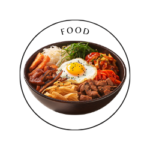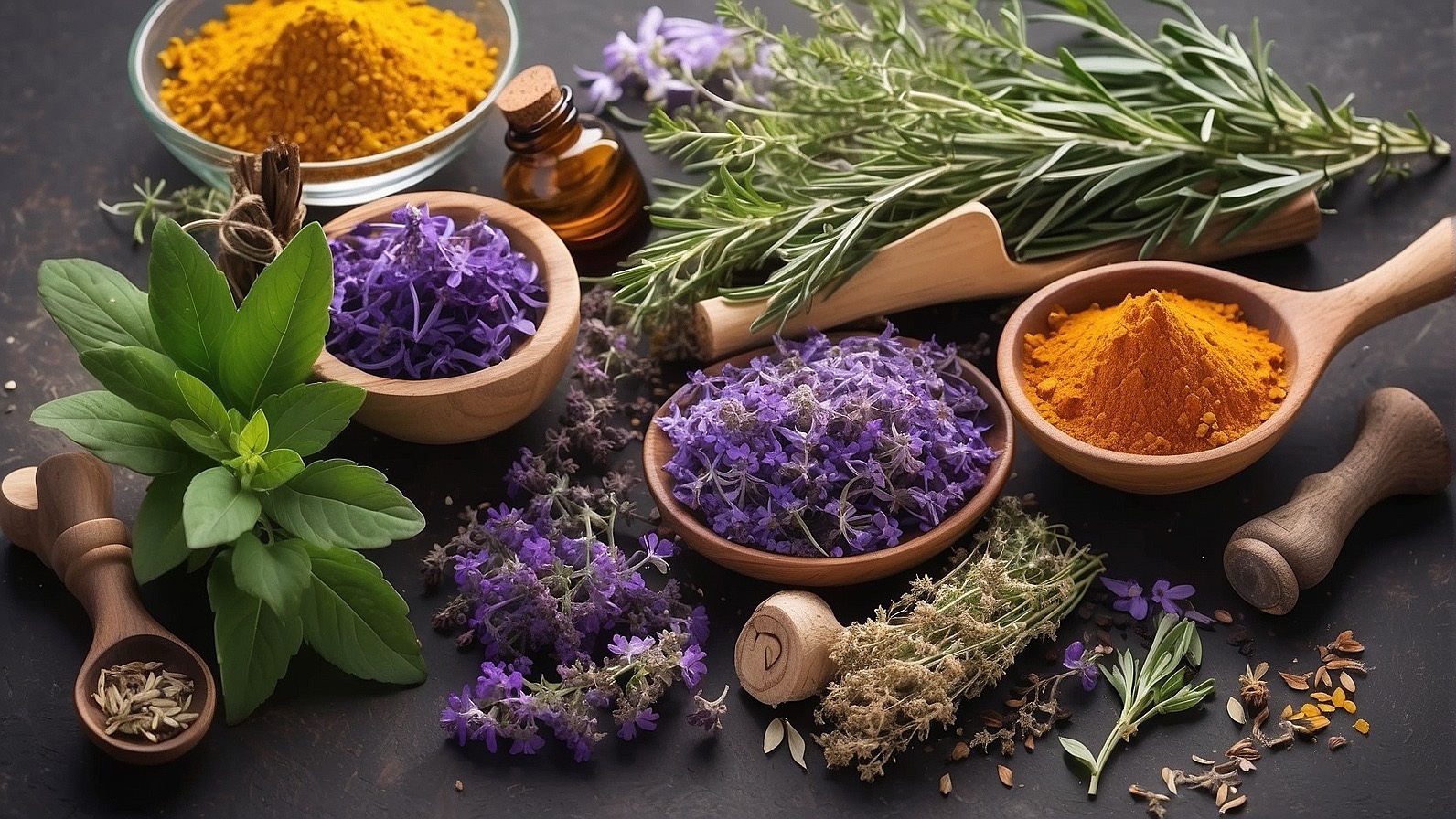 Mind
Mind
- Digital and Modern Well-being
- Mental Health and Emotional Well-being
- Mind-Body Connection and Holistic Health
- Parenting and Family
- Personal Growth and Development
- Relationships and Social Well-being
- Stress and Relaxation
- Therapeutic and Creative Practices
- Trauma and Recovery
- Work, Productivity, and Discipline
 Body
Body
 Fitness
Fitness
 Food
Food
 Beauty
Beauty
Cooking with Aromatherapy Herbs

Aromatherapy on Your Plate: The Power of Herbs in Cooking
Imagine walking into a kitchen filled with the soothing scent of lavender, the fresh zing of mint, or the warming aroma of rosemary. These aren’t just flavours for your food—they’re natural aromatherapy ingredients that can uplift your mood, calm your mind, and even aid digestion.
Cooking with aromatherapy herbs is a beautiful way to blend flavour and wellness, enhancing both your meals and your well-being. Whether you’re stirring basil into a sauce or adding chamomile to tea, these herbs offer more than taste—they provide therapeutic benefits that can transform your eating experience.
Let’s explore how to use these powerful plants in your kitchen to create flavourful, aromatic, and health-boosting meals.
Why Cook with Aromatherapy Herbs?
🌿 Enhance Flavour Naturally – Herbs add depth to dishes without the need for artificial additives or excess salt.
💆 Support Emotional Well-being – Certain herbs, like lavender and chamomile, have stress-reducing properties that calm the nervous system.
🩺 Boost Digestion & Immunity – Many herbs contain anti-inflammatory and antibacterial compounds that aid digestion and strengthen immunity.
🍃 Create a Multi-Sensory Experience – The aroma of herbs enhances the entire eating experience, making meals more satisfying.
Cooking with aromatherapy herbs isn’t just about taste—it’s about creating harmony between food and well-being.
Best Aromatherapy Herbs for Cooking (and Their Benefits!)
1. Lavender: Calm & Comfort in Every Bite
💜 Flavour Profile: Floral, slightly sweet, with a hint of citrus
💆 Aromatherapy Benefits: Reduces stress, promotes relaxation, and improves sleep
🍽️ Best Uses in Cooking:
- Infuse honey or sugar with dried lavender for teas and desserts.
- Add to shortbread cookies, cakes, or scones for a subtle floral note.
- Blend into herbal tea with chamomile for a sleep-friendly drink.
💡 Tip: Use culinary-grade lavender—regular lavender can be too strong for cooking.
2. Rosemary: A Bold & Invigorating Herb
🌿 Flavour Profile: Earthy, piney, with a slightly peppery bite
🔥 Aromatherapy Benefits: Increases focus, reduces fatigue, and boosts circulation
🍽️ Best Uses in Cooking:
- Infuse into olive oil for drizzling over roasted vegetables.
- Sprinkle on roast potatoes, lamb, or chicken for a Mediterranean twist.
- Add fresh sprigs to homemade bread dough for an aromatic flavour boost.
💡 Tip: Use whole sprigs in soups and stews—remove before serving for a mild infusion.
3. Basil: The Uplifting Herb for Mood & Digestion
🌿 Flavour Profile: Fresh, slightly sweet, with a peppery kick
😊 Aromatherapy Benefits: Improves digestion, reduces stress, and enhances mood
🍽️ Best Uses in Cooking:
- Blend into pesto for pasta or as a dip.
- Tear fresh basil over tomato-based dishes and salads.
- Add to stir-fries or soups for a burst of freshness.
💡 Tip: Add basil at the end of cooking—heat destroys its delicate aroma.
4. Mint: Refreshing & Cooling
🌱 Flavour Profile: Crisp, cooling, slightly sweet
🧘 Aromatherapy Benefits: Aids digestion, relieves headaches, and refreshes the mind
🍽️ Best Uses in Cooking:
- Add to water, teas, or cocktails for a refreshing touch.
- Mix into yoghurt-based sauces (like tzatziki) for a cooling effect.
- Use as a garnish for fruit salads and desserts.
💡 Tip: Roll mint leaves between your hands before using to release the essential oils.
5. Thyme: A Comforting Herb for Relaxation
🌿 Flavour Profile: Earthy, slightly lemony, and savoury
💤 Aromatherapy Benefits: Eases tension, supports respiratory health, and enhances relaxation
🍽️ Best Uses in Cooking:
- Sprinkle on roasted meats and vegetables.
- Add to soups and stews for deep flavour.
- Infuse in honey or herbal teas for a soothing drink.
💡 Tip: Fresh thyme can be used whole; dried thyme should be crushed between fingers to release its oils.
Infusing Aromatherapy into Everyday Cooking
Not sure where to start? Try these simple ways to incorporate aromatherapy herbs into your meals:
🍽️ Herb-Infused Oils & Vinegars – Add rosemary, thyme, or basil to olive oil or vinegar for an instant flavour boost.
🥗 Herbal Salts & Seasonings – Blend lavender, rosemary, or thyme with sea salt for a homemade gourmet seasoning.
☕ Flavoured Herbal Teas – Infuse hot water with chamomile, mint, or basil for a stress-relieving tea.
🍞 Baking with Herbs – Mix lavender or rosemary into breads, cookies, or cakes for a unique twist.
🔥 Grilled Herbs – Toss fresh herbs like rosemary or thyme on the grill with meats or vegetables for smoky, herbal aroma.
Final Thoughts: Bringing Aromatherapy to Your Kitchen
Cooking with aromatherapy herbs transforms meals into multi-sensory experiences. It’s not just about eating—it’s about engaging your senses, uplifting your mood, and nourishing your body with natural flavours.
Ready to Try It? Start with These Simple Ideas:
🌿 Infuse your cooking oil with rosemary or thyme.
🍵 Make a calming lavender or mint tea.
🥗 Sprinkle fresh basil over a tomato salad.
Your kitchen isn’t just a place to cook—it’s a space to relax, refresh, and create beautiful flavours that heal from the inside out.
